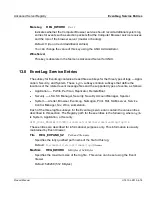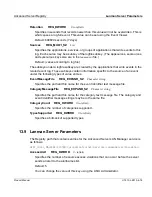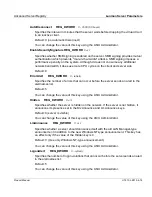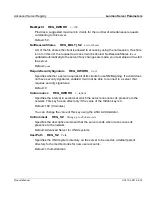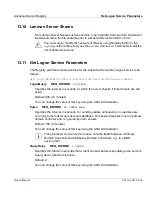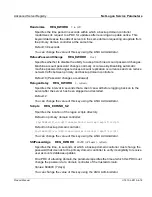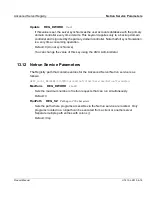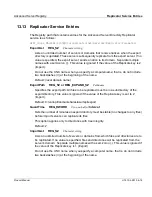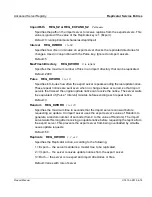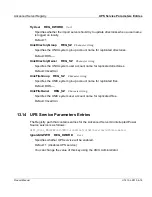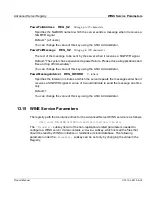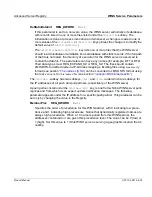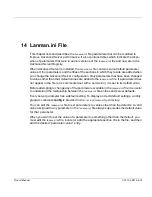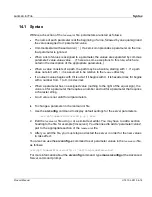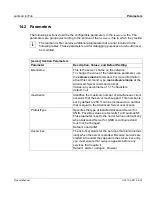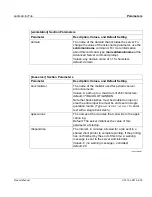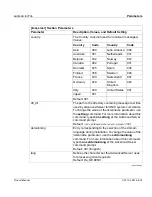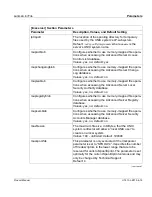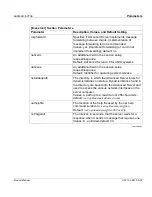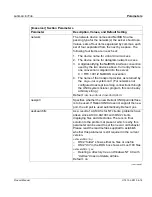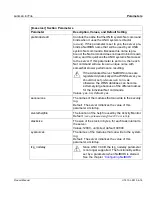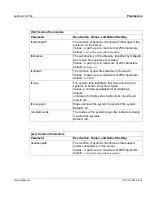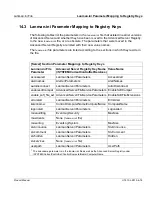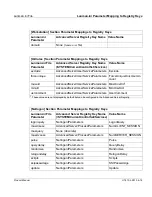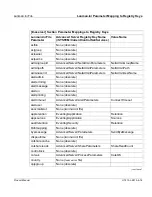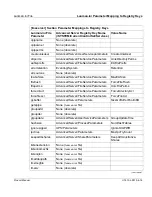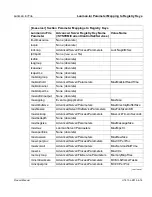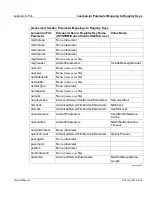
Lanman.ini File
Syntax
Product Manual
U7613-J-Z815-6-76
©
S
iem
e
n
s
N
ix
dor
f
In
fo
rm
at
io
n
s
s
y
s
te
m
e
A
G
1
9
9
5
P
fad
: D:
\O
7
613
e6
\u
761
3e
.k
14
14.1 Syntax
Within each section of the
lanman.ini
file, parameters are listed as follows:
●
The name of each parameter is at the beginning of a line, followed by an equal sign and
the value assigned to it: parameter=value.
●
Comments start with a semicolon ( ; ). If a semicolon precedes a parameter on the line,
that parameter is ignored.
●
When a list of values is assigned to a parameter, the values are separated by commas:
parameter=value,value,value
, ...
(There are some exceptions to this rule, which are
noted in the description of the appropriate parameters.)
●
When a value consists of a path, the path may be absolute, starting with / . If a path
does not start with / , it is assumed to be relative to the
lanman
directory.
●
If a numeric value begins with 0 it is octal; if it begins with X, it is hexadecimal; if it begins
with a number from 1 to 9, it is decimal.
●
When a parameter has no assigned value (nothing to the right of the equal sign), the
value is 0 for a parameter that requires a number and null for a parameter that requires
a character string.
●
A null value is not valid for all parameters.
Ê
To change a parameter in the lanman.ini file
1. Use the srvconfig command to display default settings for the server parameters:
/var/opt/lanman/bin/srvconfig -p | more
2. Edit the
lanman.ini
file using
vi
or a similar text editor. You may have to add a section
heading to the file, for example [ lmxserver ]. You then need to add a “parameter=value”
pair to the appropriate section of the
lanman.ini
file.
3. After you edit the file, you must stop and restart the server in order for the new values
to take effect.
You also can use the srvconfig -s command to set parameter values in the
lanman.ini
file,
as follows:
/var/opt/lanman/bin/srvconfig -s “section,parameter=value”
For more information about the srvconfig command, type man srvconfig at the Advanced
Server command prompt.


